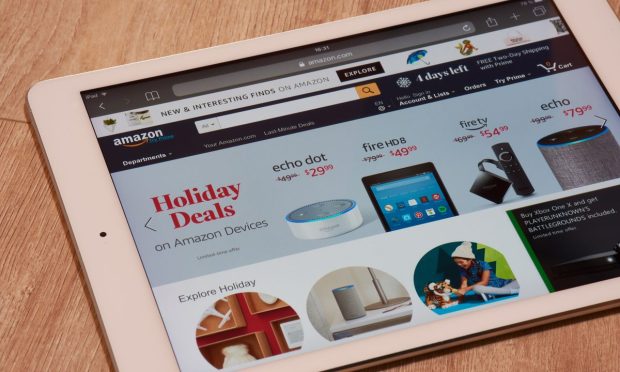Shoppers Flock to Amazon to Pick up Holiday Toys

Though clothing dominated both in-store and online purchases on Black Friday, toys and hobby equipment were still among the most purchased items as parents and grandparents sought out items to keep kids occupied during a second pandemic Christmas.
According to PYMNTS’ research, which surveyed over 2,000 U.S. consumers on Friday (Nov. 26) and Saturday (Nov. 27) about how they spent their Black Fridays, a quarter of consumers purchased toys, hobby equipment or musical instruments online, while 31% did so in-store.
See more: Inventory Stockouts Cost Retailers Up To $4.6B On Black Friday
That would seem to suggest that Walmart, where 59% of consumers shopped in-person during the unofficial kickoff to the holiday season, may have had an advantage in selling toys this year, given that it was the most popular physical retail location for Black Friday shoppers.
Still, Amazon was the most popular shopping destination on Black Friday, attracting almost 71% of digital consumers; 41% of consumers said they shopped at Walmart digitally. Additionally, a larger share of people overall shopped online on Black Friday than at a physical store, at 66% to 58%.
And since at least 2014, Amazon has had a greater share of toy, hobby and book sales than Walmart, with the former’s share steadily increasing while the latter slowly loses out. Seven years ago, Amazon had just over 7% share of the category and Walmart had just below 6%; as of last year, Amazon had 17% share and Walmart had 3.7%.
Related: Holiday Shopping Outlook Suggests ‘Amazon Christmas’ May Be Underway
Other Merchants
Amazon and Walmart, of course, are not the only toy sellers garnering holiday traffic. On Black Friday, 28% of shoppers visited Target online and over 42% visited one of the Minnesota-based retailer’s brick-and-mortar locations, perhaps looking to pick something up from the expanded selection of Disney merchandise launched earlier this year.
Read: Target Adding Nearly 100 Disney Shops To Stores In Expanded Partnership
And just in time to catch the end of the holiday shopping season, Toys R Us — once the most dominant toy retailer — is plotting yet another ambitious, if not scattered, comeback. Two weeks before Christmas, Toys R Us will open a flagship store at the American Dream mall in New Jersey, news that was only just officially announced earlier this week.
See more: Toys R Us Still Doesn’t Know What It Wants to Be When It Grows Up
Toys R Us also has a partnership with Macy’s to offer merchandise online and open shop-in-shops at 400 department stores starting next year. Just over 13% of Black Friday shoppers said they visited Macy’s online.
And despite concerns about short supplies of toys this holiday season — Hasbro had $100 million of products undelivered in the third quarter — fewer than 9% of consumers said the toy or hobby equipment they wanted was out of stock. Consumer electronics and clothing were the most common out of stock items at 18.4% and 17.8%, respectively.
Related: Hasbro Had $100M of Undelivered Product in Q3
The Bigger Picture
Beyond toys, the battle between Amazon and Walmart for control of consumers’ retail spend is neck-and-neck, with the eCommerce giant holding a 9.2% share in 2020 compared to the Arkansas box store chain’s 9.5% share.
The big advantage that Walmart has is its dominance in grocery sales, where it has a 9-to-1 advantage over Amazon. In nearly every other category, however, the box store giant has fallen behind, primarily because of Amazon’s hold on the eCommerce market. As of the third quarter, the Seattle-based company had a 57% share of U.S. digital sales made.
Related: AMZN vs WMT Weekly: Amazon Finally Matches Walmart for Consumer Retail Sales
